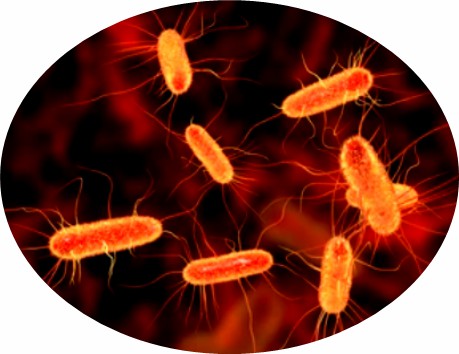The decline in the effectiveness of traditional medicines due to multidrug resistance is a major challenge for the scientific community, necessitating the development of new antibacterial drugs. CD BioSciences is committed to developing novel peptidomimetic compounds with antimicrobial activity to help address crises based on microorganisms and multidrug resistance.
Overview of AMPs
In recent years, the problem of bacterial resistance caused by frequent and irregular use of antibiotics has become a human health crisis, as antibiotic resistance causes millions of diseases and millions of deaths around the world every year. Therefore, the development of new antibacterial drugs has become an urgent task. Antimicrobial peptides (AMPs) have shown unprecedented advantages as promising biomaterials against multidrug-resistant bacteria. Unlike antibiotics that interfere with metabolism in pathogenic microorganisms, AMPs typically resist microbial action by physically disrupting the microbial lipid bilayer and induce leakage of cellular contents, so they have little effect on the evolutionary probability of bacterial resistance. Currently, AMPs are considered as ideal candidates for antibiotic substitution due to their strong antibacterial potential and unique mechanism of action.
 Fig. 1 Schematic representation of mechanisms of action of anti-microbial peptides. (Ss A, et al., 2021)
Fig. 1 Schematic representation of mechanisms of action of anti-microbial peptides. (Ss A, et al., 2021)
| Advantages of AMPs |
Disadvantages of AMPs |
- AMPs can take advantage of their structure for various chemical modifications, and their unique mechanisms of action make them not or slowly develop drug-resistant strains, so they lead to novel drugs with better treatment and safety.
|
- The high relative molecular mass of AMPs complicates their synthesis, and the biological properties of AMPs lead to their cytotoxicity, instability, short half-life, and rapid elimination by enzymes such as trypsin and chemotactic trypsin.
|
Solution for Optimizing AMPs
One of the most effective strategies is to partially extract native AMPs or to simulate and replicate the physicochemical properties (cationic charge, hydrophobicity, amphipathicity) and biological effects of these native AMPs to prepare peptidomimetics. These peptidomimetic molecules tend to exhibit higher bioavailability and longer in vivo half-lives, with better protease resistance. To date, various approaches have been used to design highly efficient peptidomimetics with alternative backbone structures.
 Fig. 2 The antibacterial mechanism of cationic peptidomimetics. (Li H, et al., 2020)
Fig. 2 The antibacterial mechanism of cationic peptidomimetics. (Li H, et al., 2020)
Our Services
With our long-term commitment to the development of peptidomimetics based on antimicrobial activity, our extensive experience and advanced platform will help our customers accelerate their projects. The service mainly revolves around the following aspects:
Optimization of AMPs
Our PepDomTM platform enables rational design to optimize the performance of AMPs, typically deletions, additions and substitutions of amino acids conferring specific properties, and modifications to side chain structures in nucleic acid libraries encoding amino acids.
- Change the charge of AMPs
- Change the hydrophobicity of AMPs
- Adjustment of the structural propensity of AMPs
- Regulation of amphipathicity of AMPs
De novo Development of Anti-Microbial Peptidomimetic
Our PepDomTM platform also provides de novo development services for AMPs. The general steps are: template design of AMPs, establishment of peptide library, functional screening, and result verification.
- Development of hybrid anti-microbial peptidomimetics
- Development of multifunctional anti-microbial peptidomimetics
- Development of specifically targeted anti-microbial peptidomimetics (STAMPs)
- Development of anti-microbial peptidomimetics with intracellular bactericidal capacity
- Development of pH-responsive anti-microbial peptidomimetics
Features of Our AMPs

High Anti-Microbial Activity

High Stability

Low Cytotoxicity

Low Hemolytic Activity
CD BioSciences is always ready to provide the best services to each of our customers. If you are interested in our services or have any specific requirements, please feel free to contact us for more details.
References
- Ss, A., Pb, B., Sj, C., Sp, A., & As, A. (2021). Multidrug Resistance Crisis During COVID-19 Pandemic: Role of Anti-microbial Peptides as Next-generation Therapeutics. Colloids and Surfaces B: Biointerfaces, 211, 112303.
- Li, H., Fu, S., Wang, Y., Yuan, X., & Zhang, Z. (2020). Antimicrobial and antitumor activity of peptidomimetics synthesized from amino acids. Bioorganic Chemistry, 106(4), 104506.
- Tan, P., Fu, H., & Ma, X. (2021). Design, optimization, and nanotechnology of antimicrobial peptides: from exploration to applications. Nano Today, 39, 101229.
All of our services are intended for preclinical research use only and cannot be used to diagnose, treat or manage patients.


 Fig. 1 Schematic representation of mechanisms of action of anti-microbial peptides. (Ss A, et al., 2021)
Fig. 1 Schematic representation of mechanisms of action of anti-microbial peptides. (Ss A, et al., 2021) Fig. 2 The antibacterial mechanism of cationic peptidomimetics. (Li H, et al., 2020)
Fig. 2 The antibacterial mechanism of cationic peptidomimetics. (Li H, et al., 2020)


